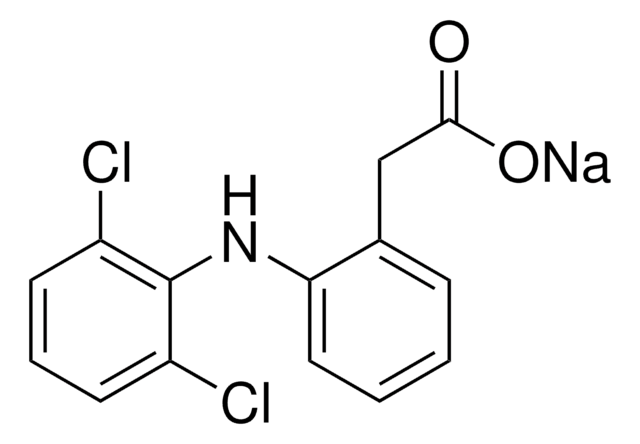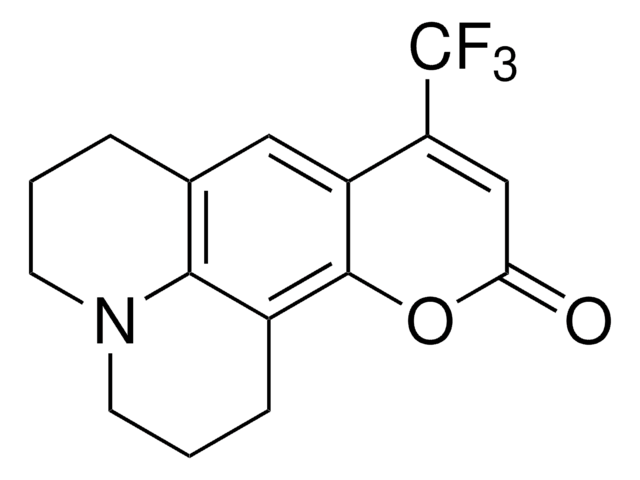C4261
Coumarin
≥99% (HPLC)
Synonym(s):
1,2-Benzopyrone, 1-Benzopyran-2-one, 2H-Chromen-2-one
About This Item
Recommended Products
vapor pressure
0.01 mmHg ( 47 °C)
assay
≥99% (HPLC)
form
powder
bp
298 °C (lit.)
mp
68-73 °C (lit.)
SMILES string
O=C1Oc2ccccc2C=C1
InChI
1S/C9H6O2/c10-9-6-5-7-3-1-2-4-8(7)11-9/h1-6H
InChI key
ZYGHJZDHTFUPRJ-UHFFFAOYSA-N
Gene Information
rat ... Maoa(29253) , Maob(25750)
Looking for similar products? Visit Product Comparison Guide
Application
signalword
Danger
hcodes
Hazard Classifications
Acute Tox. 3 Dermal - Acute Tox. 3 Oral - Skin Sens. 1
Storage Class
6.1C - Combustible acute toxic Cat.3 / toxic compounds or compounds which causing chronic effects
wgk_germany
WGK 1
flash_point_f
323.6 °F - closed cup
flash_point_c
162 °C - closed cup
ppe
dust mask type N95 (US), Eyeshields, Faceshields, Gloves
Certificates of Analysis (COA)
Search for Certificates of Analysis (COA) by entering the products Lot/Batch Number. Lot and Batch Numbers can be found on a product’s label following the words ‘Lot’ or ‘Batch’.
Already Own This Product?
Find documentation for the products that you have recently purchased in the Document Library.
Customers Also Viewed
Our team of scientists has experience in all areas of research including Life Science, Material Science, Chemical Synthesis, Chromatography, Analytical and many others.
Contact Technical Service








